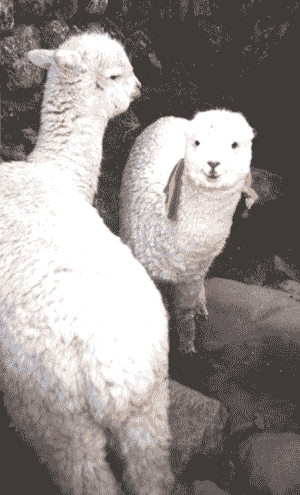
e.g. alqolla = "only the dog"
(alqo = "dog") (-lla = "only")
2. This suffix also indicates positive affect or emotion; it softens the tone of an expression, especially with questions.
e.g. Imaynalla? = "How (are you)?"
(imayna = "how") (-lla = affective)e.g. allillan = "(really) good"
(allin = "good") (-lla = affective)
3. When "-lla" is attached onto verbs, it indicates that the action is realized continuously, expressing intensity.
e.g. Tusullan. = "She/he dances"(continuously).
(tusuy = "to dance") (-lla = "continuously") (-n = 3rd person singular present tense conjugation)
4. When the suffix, "-lla" appears together with the suffix, "-pas/-pis", this is translated as "at least".
e.g. Kayllatapas tukuy! = At least finish this!
(kay = "this") (-lla…-pas = "at least") (-ta = direct object marker) (tukuy = command "finish")
5. When the suffixes, "-lla" and "-taq" appear together in the same word, it means "the same", "just like that", "also", and "again".
e.g. Hamuq miércoles takillasuntaq. = We will also sing next Wednesday.
(hamuy = "to come") (-q = agentive) (miercoles = "Wednesday") (takiy ="to sing") (-lla…-taq = "also") (-sun = 1st person plural inclusive future tense conjugation)
6. When "-lla" is added to the ends of duplicated nouns that have adverbial meaning, it creates new adverbs.
e.g. Chay sipas kusi kusillan tusun. = That young lady dances happily.
(chay = "that") (sipas = "young woman") (kusi kusi = "(very)happy") (-lla = adverbalizer) (-n = 3rd person singular present tense conjugation) (tusuy = "to dance") (-n = 3rd person singular present tense conjugation)
1. Fill-in the suffix
2. Multiple choice
3. Matching